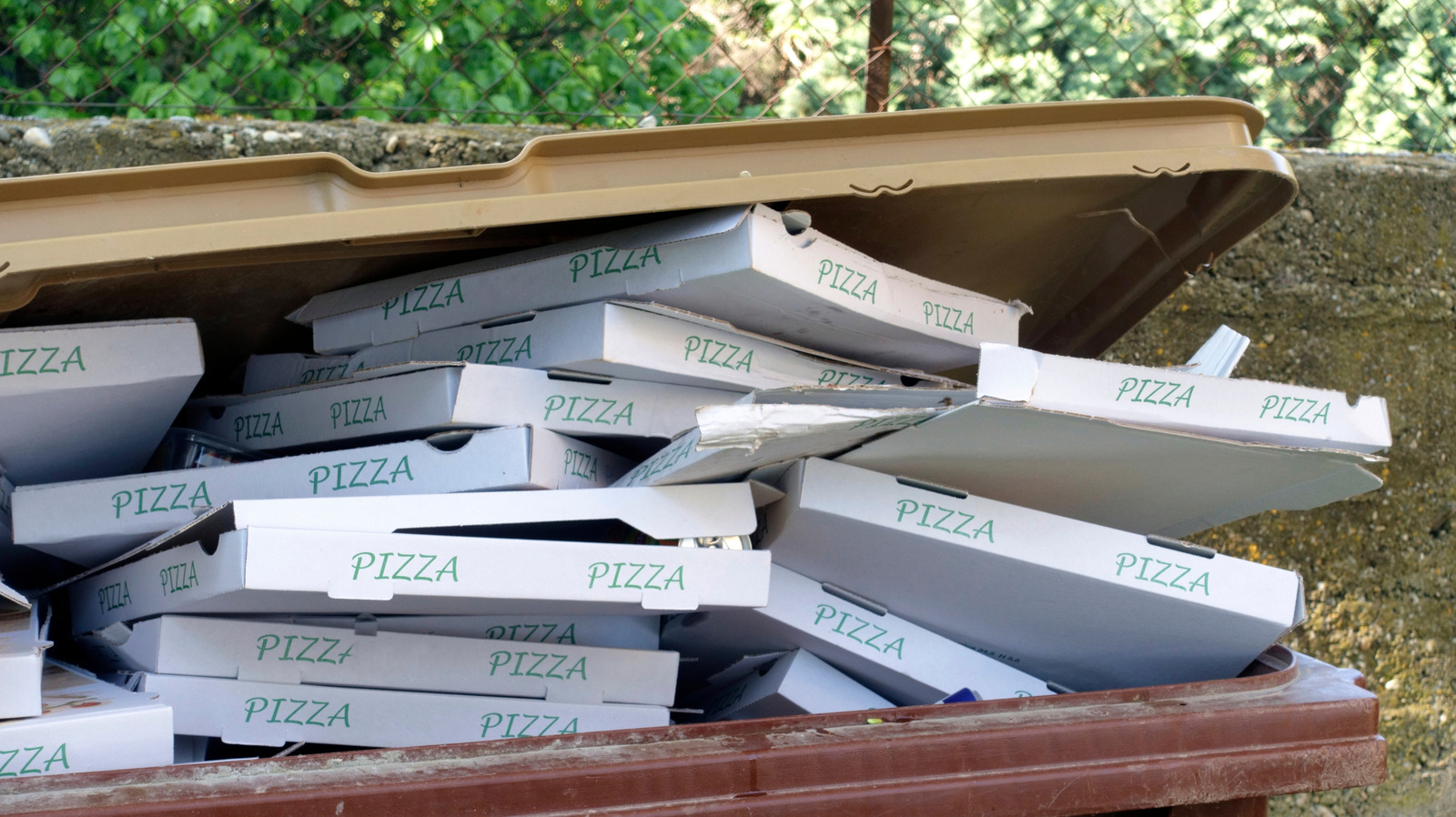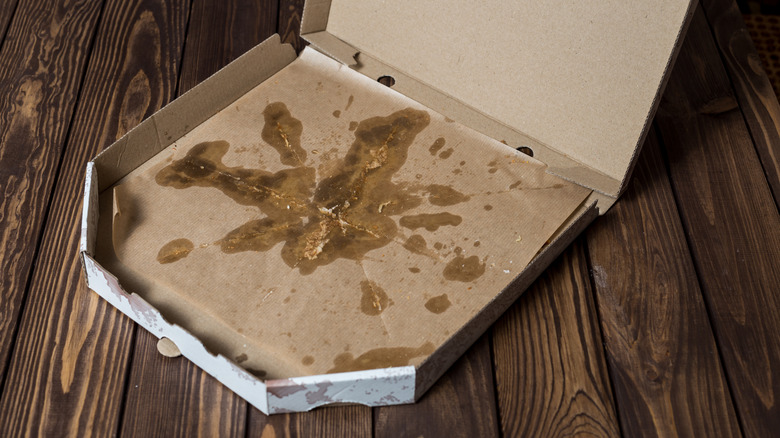The pizza’s finished, all that’s left are crumbs and the pizza box that you need to wrestle with like it’s an oversized origami square to fit into the garbage bin. In fact, these unwieldy cartons make pizza one of the foods flight attendants wish passengers wouldn’t carry onboard. It’s easy to obtain these boxes, but difficult to get rid of them. On a larger scale, these corrugated cardboard boxes really pile up, with the American Forest & Paper Association (AF&PA) estimating that about 3 billion pizza boxes are used annually.
Considering their design hasn’t changed much since pizza boxes were invented in the 1960s, and they’re basically made of paper and cardboard, you should be recycling pizza boxes as often as possible. Unfortunately, that can sometimes be hindered by the grease, cheese, and stray food bits on the box.
Recycling contamination is a legitimate issue, and even well-meaning garbage warriors can end up mistakenly throwing food waste along with the carton into the recycling bin. This can sometimes lead to additional wastage since an entire batch of recyclable material might be thrown out if it gets contaminated by food waste. Therefore, the first step to meaningfully recycle pizza boxes is to check the recycling rules of your town, city, or state, since guidelines can vary. Second, just because there’s a small amount of food waste stuck to the pizza box doesn’t mean it can’t be recycled. Instead, you should tear off sections that are too greasy and dispose of them with food waste, while putting the rest of the pizza box into the recycling bin.
Watch for greasy, cheesy sections when recycling your pizza box
Recycle mills actually process huge quantities of pizza boxes, with over 90% of the corrugated cardboard that AF&PA member mills receive originating from pizza boxes. Generally, it’s quite simple to recycle the container, especially if the pizza box comes lined with paper to block grease from seeping into the cardboard. In this case, one should simply remove the liner, check the rest of the box for any food waste stuck to it, and recycle it.
The real problem is grease seeping into the cardboard, since that makes the recycling process much more complicated. Most paper meant to be recycled is first washed. Unfortunately, this isn’t always enough to get rid of fats, oils, and grease. If this food waste makes its way into the recycled paper, it might degrade the entire batch, rendering it unusable. A study by the Idaho National Laboratory, published in the Journal of Cleaner Production, looks at effective ways to remove grease and fats attached to pizza boxes. The findings hope to help not just recycle pizza boxes more efficiently but also help military bases in war zones reuse materials, potentially reducing resupply runs. As wild as any connection between recycling pizza boxes and saving lives can sound, the repercussions of separating grease from cardboard do go that deep.
When it comes to doing the same at home, the best way is to tear off greasy or soiled bits of the box and recycle the rest. Due to improved processes, a few grease and cheese spots are now manageable. However, when in doubt, always remove the soiled parts of the pizza box and recycle the rest.






